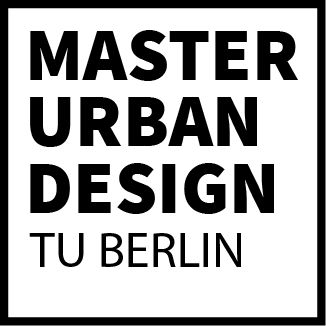
Urban Design Studio
Spatial Commons 15 – Berlin Where Do We Stand? WS 2022/2023
Tutors: Anna Heilgemeir, Julia Köpper and Jörg Stollman
Chair of Urban Design and Urbanisation, Chair of Urban Design and Urbanisation
Students:
Consuelo Araneda, Püren Bahçivan, Hannah Berner, Öykü Dogru, Valerija Kaufmann, Natalia Lazareva, Jesco Lippke, Jannis Meyer, Simten Önen, Benjamín Peralta, Natalia Pérez, loanna Protopapadaki, William Scobie
Our project explores the current urban development project ‚New Urban Centre Neu-Hohenschönhausen reframing the focus to inclusive and diverse neighbourhoods, reflecting the multiple understandings, scales and spatialities of the centre of Neu-Hohenschönhausen. Situated at the periphery of Berlin, the site is defined by green open spaces, highrise settlements, peripheral landscape ecologies, diverse community actors and varied systems of mobility. As a public-civic project, we see this project as an exciting opportunity for common-good-oriented urban development. In A1 Core Drillings we analysed existing conditions of the site, taking into consideration various contexts and processes to understand the project. In A2 Prototypes we collectively explored model projects and prototypes, speculating on alternative prototypes and identified gaps, ambiguities and opportunities to complement and expand the scope of the current masterplan process. This framed our final A3 Design where we worked with the masterplan with key focuses on open green spaces and multispecies biodiversity, connecting NHSH neighbourhoods, groundfloor programming and adaptive reuse of existing buildings, alternative models of housing and caretaking as well as active participation and engagement with local initiatives and residents through communication and participation methods.
Our mission is to establish a new local center for an inclusive and diverse neighborhood in Neu-Hohenschönhausen (NHSH) that addresses the challenges faced by the residents. We aim to create a space that promotes social, economic, and cultural opportunities for everyone. Our goal is to ensure that the local community has access to affordable housing, health care, education, and job opportunities. We will prioritize the needs and wishes expressed by the inhabitants of NHSH and work towards fulfilling them. e aspire to build a vibrant and cohesive neighborhood that encourages self-organization and community involvement. Through this project, we aim to counter the racist and anti-democratic tendencies that have emerged due to socio-economic isolation. We will promote diversity and density by creating public spaces, such as meeting places, outdoor seating, playgrounds, green spaces, communal gardens, and more. Our vision is to create a sustainable and livable neighborhood that caters to the needs of all its residents.
Key themes explored include:
- How can common-good oriented partnerships be established between
state government, local municipalities, state-based housing organisations, cooperative housing organisations and self-organised community organisations?
- How can we promote multispecies rights and responsibilities and support green spaces and biodiversity?

- How can models of ownership, leasehold and caretaking be used to effectively prevent speculation whilst promoting shared responsibility and collective ownership?
- How can local community actors be meaningfully included in early
planning processes and embedded within the programming of the masterplan?
- How can existing spaces be adapted and reused to reduce unnecessary
construction of new buildings?
- How can alternative models of housing encourage more communal and
supportive housing networks for diverse and disadvantaged groups?
- How can local residents be more engaged and informed about active processes and shape the future of the project?




